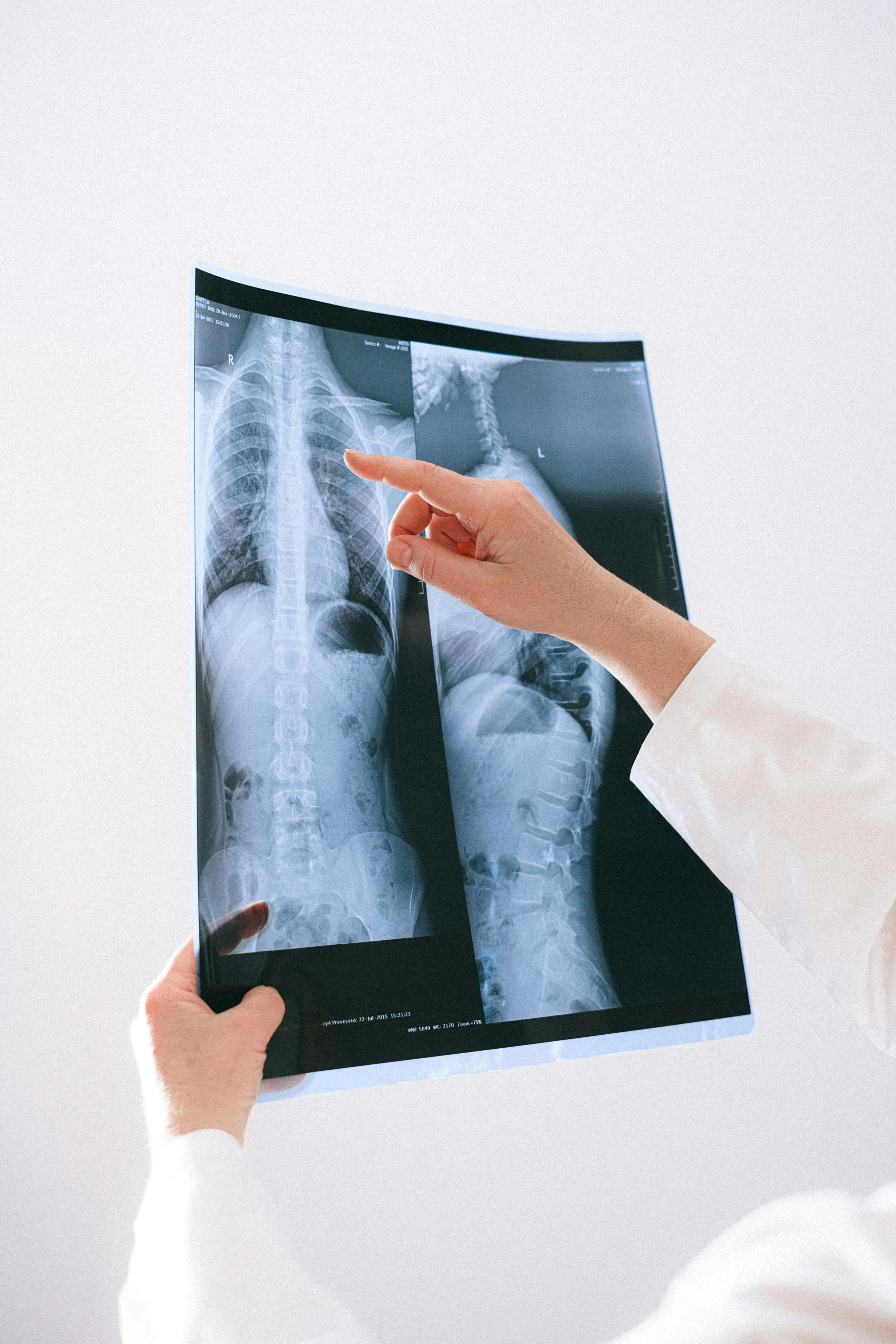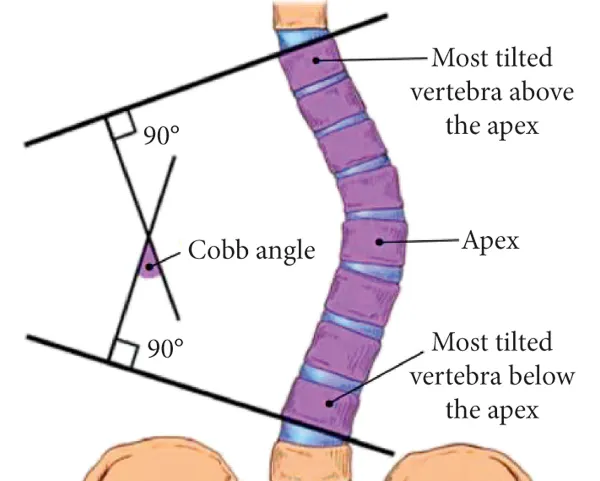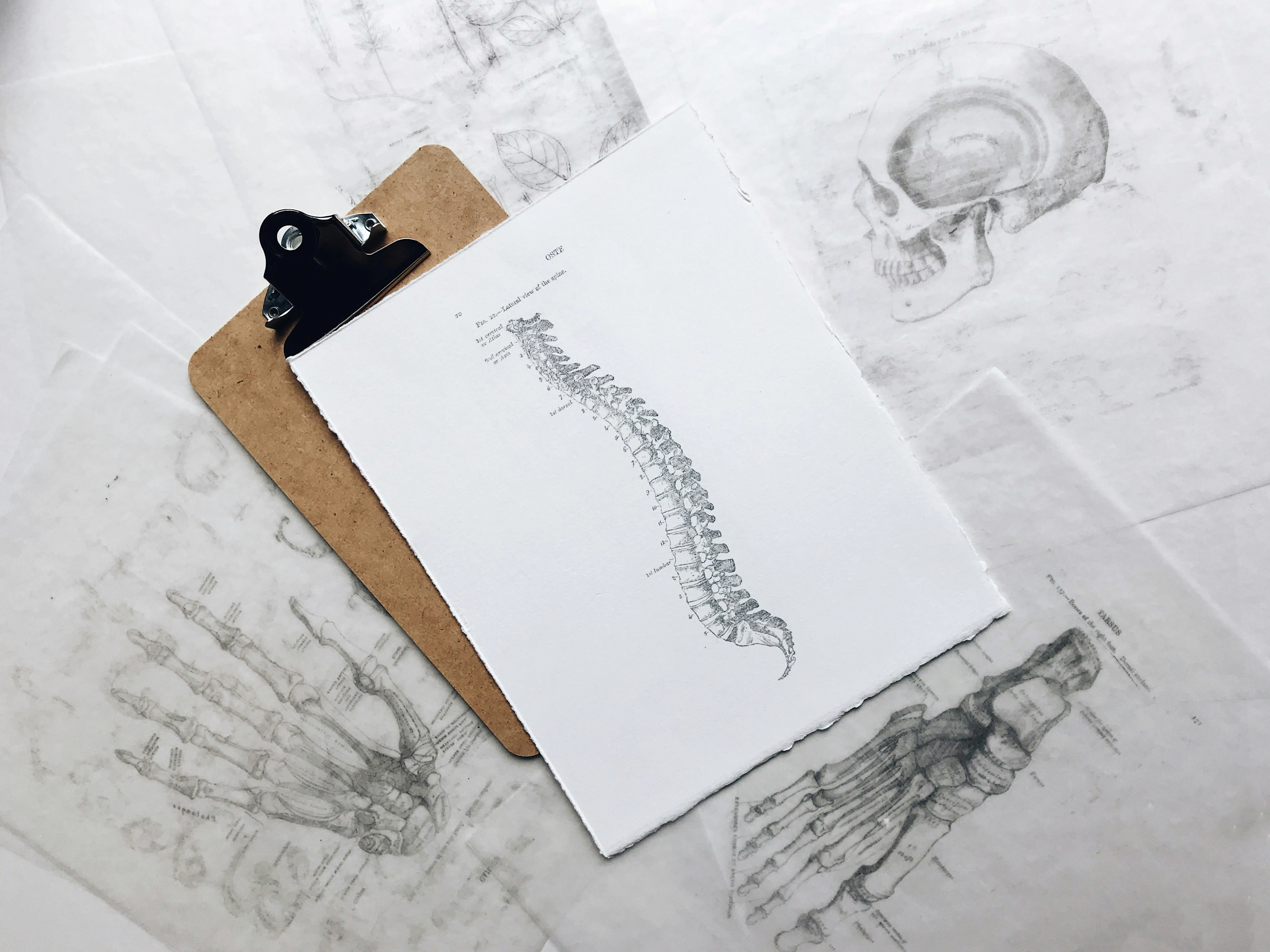
Reading Time
4 minutes
Published
Mar 21, 2024
Cobb Angle Demystified: Understanding the Core Measurement in Scoliosis
Scoliosis, a condition characterized by an abnormal curvature of the spine, often necessitates precise measurements for effective diagnosis and treatment. At the heart of scoliosis assessment lies the Cobb Angle – a critical measurement that serves as a compass guiding healthcare professionals in understanding the severity of spinal deformities.
Written By
Momentum Health
Scoliosis patients often hear the words “Cobb Angle” thrown around during the doctor's visits. But what does it truly mean, and how is it measured? How is it used to monitor progression in the medical field? And most importantly for patients and caregivers, what does this mean? This article is meant to answer all of these questions, and help clarify your understanding.
What is the Cobb Angle?
The Cobb Angle is the cornerstone in evaluating the magnitude of spinal curvature. This measurement is crucial for diagnosing scoliosis and determining the appropriate course of treatment. It is important to note that although the Cobb Angle is the most frequent measurement used and discussed to determine treatment, it is not the only one. Many other measurements can also be important to dictate the proper course of action for each patient.
How to measure Cobb Angle in scoliosis patients
The Cobb Angle quantifies the angle formed by the most tilted vertebrae at the top and bottom of the curvature. This measurement offers a standardized way to communicate the severity of the deformity. Typically an X-ray of the torso is needed to determine the Cobb Angle. Currently the Cobb angle is measured through 3 steps.
The apex of the curvature is identified on the X-ray. The apex is the most displaced vertebra in the curvature.
Two lines are drawn. The first along the most tilted vertebrae above the apex, and the second along the most tilted vertebrae below the apex. Each of these lines are extended and a perpendicular line on each is drawn.
The angle formed by the intersection of the perpendicular lines is the Cobb Angle.
The image below (Ming-Huwi et al., 2019) depicts the specific calculations of the Cobb Angle and clearly demonstrates the Cobb Angle. This precise measurement helps healthcare providers gauge the extent of spinal deviation and plan interventions accordingly.

Image source:
Horng, M. H., Kuok, C. P., Fu, M. J., Lin, C. J., & Sun, Y. N. (2019). Cobb Angle Measurement of Spine from X-Ray Images Using Convolutional Neural Network. Computational and mathematical methods in medicine, 2019, 6357171. https://doi.org/10.1155/2019/6357171
Currently, physicians use a program to calculate the angles automatically, once the most tilted vertebrae are identified. Each individual X-ray must be analyzed by physicians, to determine the Cobb Angle. Momentum Spine, on the other hand, uses artificial intelligence to predict the Cobb angle, by comparing the surface of the patient’s body. This technology is called Surface Topography.
Why is the Cobb Angle important in evaluating scoliosis?
Understanding the Cobb Angle is pivotal as it correlates with the severity of the scoliosis.
A smaller Cobb Angle indicates a milder curvature, often requiring monitoring rather than immediate intervention.
Conversely, a larger Cobb Angle suggests more significant deformities that may necessitate bracing or surgical intervention to prevent further progression.
For scoliosis patients, X-rays are currently taken every 6-months, to periodically monitor the progression of the Cobb Angle. It is important to closely monitor changes in Cobb Angle, as they could be indicative of worsening deformity, which needs to be addressed as soon as possible by physicians.
Monitoring Cobb Angles with Momentum Spine
Comprehending the Cobb Angle is fundamental for individuals navigating scoliosis. It serves as a tangible metric, allowing patients and healthcare providers to collaboratively chart a course of action. By understanding the Cobb Angle, individuals are empowered to take a proactive position in discussions surrounding their spinal health and foster informed decision-making when it comes to treatment options.
Instead of having to do X-rays every 6-months, Momentum Spine can measure a patient's Cobb Angle from a simple video taken on your smartphone. Patients will be able to keep track of the cobb angle measurements from the comfort of their home, without having to calculate it themselves. Physicians who want to use Momentum Spine to provide closer monitoring to their patients can follow curve progression through the at-home scans and determine whether a patient needs to be seen in the clinic or not. Momentum Spine’s imagery-guided AI predictions allow physicians to stratify patients by severity, intervene timely and follow the progress of their patients closely to ensure an optimized and personalized standard of care.
View the power of Momentum Spine HERE and download the app now!
Other
More articles you may find interesting


